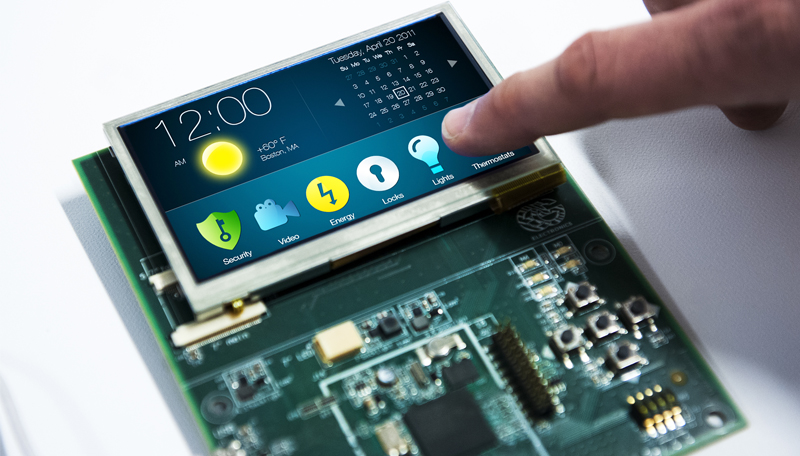Machine Learning

Machine learning is highly relevant for industrial IOT for several reasons:
Data Analytics and Predictive Maintenance: IIoT generates massive amounts of data from various sensors, devices, and machines in an industrial setting. Machine learning algorithms can analyze this data to uncover patterns, detect anomalies, and predict maintenance requirements. By applying predictive analytics, machine learning can identify potential failures before they occur, enabling proactive maintenance, reducing downtime, and optimizing the overall efficiency of industrial processes.
Process Optimization: Machine learning algorithms can optimize complex industrial processes by continuously analyzing real-time data from IIoT devices. These algorithms can identify bottlenecks, optimize resource allocation, and suggest improvements to increase productivity and reduce waste. By leveraging machine learning, industries can achieve better process efficiency, lower costs, and improved product quality.
Fault Detection and Quality Control: IIoT devices collect data about various parameters such as temperature, pressure, vibration, and more. Machine learning models can analyze this data to identify potential faults or anomalies in the production process. By monitoring data in real-time, machine learning algorithms can detect deviations from normal patterns and trigger alerts or corrective actions. This helps in ensuring product quality, reducing defects, and avoiding costly recalls.
Energy Management: Industrial operations consume significant amounts of energy. Machine learning algorithms can analyze IIoT data to optimize energy consumption patterns, identify energy-saving opportunities, and provide insights for sustainable energy management. By applying machine learning techniques, industries can reduce energy waste, lower operational costs, and make their processes more environmentally friendly.
Supply Chain Optimization: IIoT devices generate data throughout the supply chain, from production to distribution. Machine learning can analyze this data to optimize inventory management, demand forecasting, and logistics. By accurately predicting demand, detecting patterns, and optimizing routing, machine learning can help streamline the supply chain, reduce lead times, minimize stockouts, and improve overall efficiency.

Another very interesting vertical within Machine learning which is highly relevant for medical wearables due to its ability to analyze and interpret vast amounts of data collected by these devices. Here are several reasons why machine learning is crucial in the context of medical wearables:
Data analysis: Medical wearables generate an enormous volume of data, including physiological signals, activity levels, sleep patterns, and more. Machine learning algorithms can process and analyze this data to identify meaningful patterns and insights that can be used for diagnosis, monitoring, and treatment.
Personalized healthcare: Machine learning algorithms can learn from individual patient data to create personalized models that adapt to each user’s specific health needs. By combining wearable sensor data with other relevant medical information, machine learning can provide personalized recommendations, interventions, and treatment plans.
Disease management and prevention: Medical wearables equipped with machine learning algorithms can provide ongoing monitoring and support for individuals with chronic diseases such as diabetes, cardiovascular conditions, and respiratory disorders. These algorithms can analyze real-time data, detect abnormalities, predict disease exacerbations, and provide personalized feedback to help manage symptoms and prevent complications.
Remote patient monitoring: Machine learning-powered medical wearables enable remote monitoring of patients, allowing healthcare providers to collect and analyze data outside of traditional clinical settings. This capability is particularly valuable for individuals in rural or underserved areas, elderly patients, and those with limited mobility. Machine learning can aid in analyzing the collected data and identifying trends or deviations that require medical attention.
Continuous improvement: Machine learning algorithms can continually learn and adapt from the data collected by medical wearables, leading to iterative improvements in accuracy and performance over time. As more data is gathered, the algorithms can refine their predictions and recommendations, enhancing the overall quality of healthcare provided by these wearables.
Overall, machine learning empowers industrial IOT leveraging the vast amount of data generated by IIoT devices to drive insights, optimize processes, and make informed decisions in industrial settings. In the case of medical wearables ML enables to go beyond simple data collection and enables them to provide valuable insights, personalized healthcare, and proactive monitoring. By leveraging the power of machine learning, these devices have the potential to revolutionize healthcare delivery, improving patient outcomes and quality of life.
More resources can be found here
Industrial IoT:
“Industrial IoT: How to Navigate the Landscape” by McKinsey & Company: https://www.mckinsey.com/business-functions/mckinsey-digital/our-insights/industrial-iot-how-to-navigate-the-landscape
“The Role of Machine Learning in Industrial Internet of Things (IIoT)” by Forbes: https://www.forbes.com/sites/forbestechcouncil/2021/06/17/the-role-of-machine-learning-in-industrial-internet-of-things-iiot/?sh=525f40d67c6e
“How Machine Learning and AI Are Transforming Industrial IoT” by IoT for All: https://www.iotforall.com/machine-learning-ai-transforming-industrial-iot
Medical Wearables:
“The Role of Machine Learning in Wearable Healthcare” by Technology Networks: https://www.technologynetworks.com/diagnostics/articles/the-role-of-machine-learning-in-wearable-healthcare-320752
“Machine Learning in Healthcare: Applications, Benefits, and Challenges” by HealthITAnalytics: https://healthitanalytics.com/news/machine-learning-in-healthcare-applications-benefits-and-challenges
“Wearable Medical Devices and Machine Learning: A Perfect Match” by Emerj: https://emerj.com/ai-sector-overviews/wearable-medical-devices-and-machine-learning-a-perfect-match/
